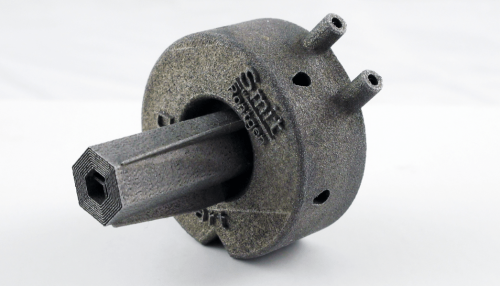Tungsten is a hard pure metal that distinguishes itself for having a melting point of 3422°C, which is the highest of all metals. Besides its outstanding temperature resistance, the material is also highly resistant to wear and chemicals. Since it is non-magnetic, 3D printed parts are often used for MRIs (magnetic resonance imaging) in the medical industry.
Pure Tungsten is highly dense, hard, and stiff making it ideal for extreme applications. Also for that reason, processing Tungsten for it to be 3D printed with high accuracy was not possible until not long ago.
Also, Tungsten offers a characteristic that is rarely seen in 3D printing materials. It excels at absorbing and shielding radiation, allowing 3D printed parts to be used at extreme conditions in the nuclear energy industry.

Strengths
Weakness
- May break when enough pressure is applied
